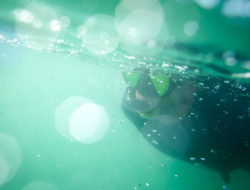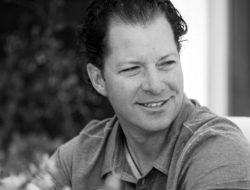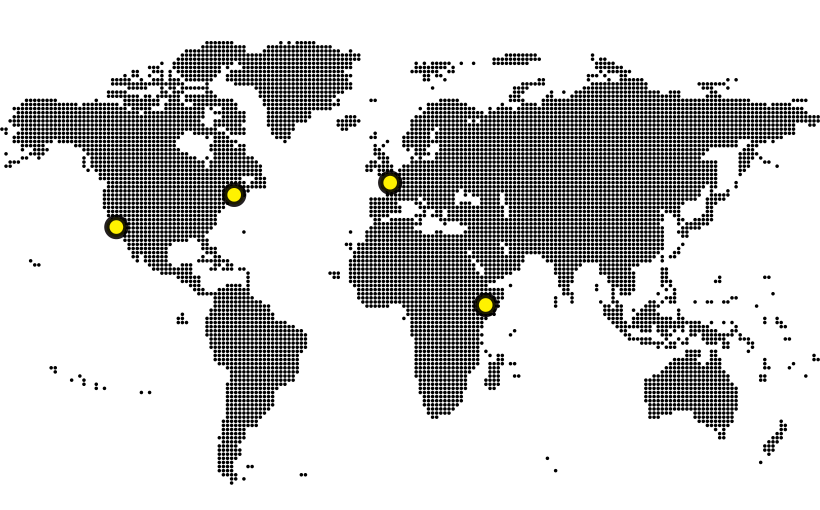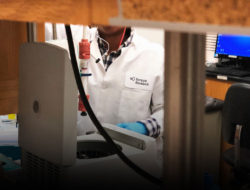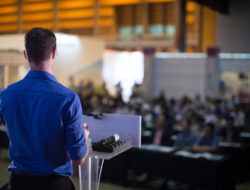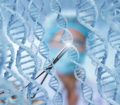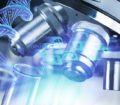1 The Frozen Frontier
It’s summertime at the South Pole, but the weather is nothing to write home about. On a good day it’s 26 degrees, and there’s still a chance of blinding snowstorms despite the sun never setting. Eight teams of researchers from the Scripps Institution of Oceanography have spent months preparing to call Antarctica’s McMurdo Station home for the season, in the name of science. They’re analyzing subglacial lakes, drilling through miles of ice, and testing rebreathers for divers.
One of the studies is the groundbreaking ARM West Antarctic Radiation Experiment (AWARE). Scripps scientists, the National Science Foundation, and the U.S. Department of Energy teamed up to deploy equipment to monitor the atmosphere and solar radiation on a remote ice shelf—a region so inaccessible that it hasn’t hosted meteorological fieldwork for around 60 years.
Dan Lubin, the project’s lead scientist, says our understanding of how surface melting occurs and contributes to ice sheet loss in West Antarctica is inadequate. The study was designed to address this, and the data being gathered has never been collected before. “This is exactly why I went into polar field research,” Lubin says. “Antarctica is one of the great unexplored regions of our planet, and the fact that nearly everything I bring back is new makes the work very exciting.”
2The British are Coming!
San Diego’s life science sector just got the royal treatment. The U.K. recently opened an office here to give companies better access to the country’s research facilities, and to make it easier for British firms to expand to San Diego. About $300 million in trade already happens between San Diego and the U.K., and Illumina has a contract with the nation’s National Health Service. The new office is not an official consulate, so it’s not open to the public. Local life sciences companies interested in doing business across the pond can make an appointment with Hilda Mwangi, vice consul for the Department of International Trade at Hilda.Mwangi@mobile.trade.gov.uk.
3Pond Scum to Surf Gear
Algae. They’re among the world’s most numerous life forms and produce the vast majority of our breathable air, but till now your only experience with them has probably been when somebody forgot to clean the swimming pool. San Diegan Rob Falken is finding new use for them with Bloom Foam—the world’s first plant-based alternative to petroleum-based and synthentic foams, which also tackles the problem of an overabundance of algae in freshwater sources.
Algal blooms happen when there are too many nutrients in the water, and an overgrowth of algae can snuff out other plants and animals. Bloom harvests this excess green goop from lakes, ponds, and rivers, and then solar-dries and mills it into a flexible foam. The foam contains 15 to 60 percent algae and can replace any of the denser closed-cell foams (e.g. polyethylene, neoprene), though the company is focusing on high-performance materials like footwear soles, yoga mats, insulation, automotive applications, and medical devices—oh, and surfboards.
Bloom, a joint venture between Solana Beach–based material development firm Effekt Change and Mississippi-based algae biomass harvester Algix, worked with star surfer Kelly Slater and board shaper Firewire Surfboards to produce surfboard traction pads made with 100 percent Bloom Foam. The boards can be found in surf stores around the world. Bloom is also in talks with several footwear brands.
Falken and his team aren’t just applying this solution to recreation. They’re working with AECOM, a global engineering firm, to make their algae-harvesting units available to places that are facing harmful algal blooms—known as “red tide”—like Florida’s Gulf Coast. They’re also developing a plant-based antimicrobial foam that’s 99.99-percent effective at stopping the growth of bacteria, namely those found on yoga mats, shoe insoles, and deodorant. And who among us doesn’t need all the odor-busting, bacteria-inhibiting help we can get?
4Follow Me!
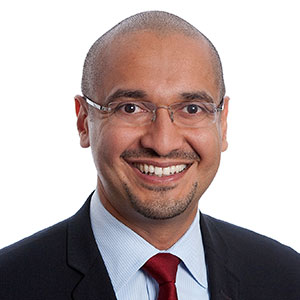
Illumina’s new CEO, Francis deSouza, is a citizen of the world. His family is Indian and Greek, he’s lived in Ethiopia and Dubai, and he was admitted to MIT when he was just 16 years old. Even though he’s in charge of the world’s smartest company, he finds time to share news about genomics on Twitter.
Here’s three cool things we learned from his account:
- Dogs underwent genomic changes when humans first started feeding them food scraps thousands of years ago.
- Scientists just sequenced the genome of a 5,000-year-old cob of corn to study how the crop spread quickly around the world.
- Researchers are looking at the genetic makeup of the zebrafish, which lives in streams around the Himalayas, because it has the ability to grow a new spine after being injured.
5My Big Idea: Let’s Poach Bay Area Engineers
By Mike Krenn, President of San Diego Venture Group
On February 1, representatives from 40 of San Diego’s tech companies are going up to Silicon Valley to poach some of the best engineers. How? By educating them on the benefits of moving to San Diego. It’s never been done before, and to our knowledge, San Diego is the first city to do anything like it.
Our companies are taking over the Computer History Museum in Mountain View and we expect to attract 500 to 1,000 software engineers who’ve expressed interest in relocating. Each company is personally recruiting attendees; Hired is mining their network, and UCSD is recruiting their alumni.
People want out of Silicon Valley—the cost of living is too high and the traffic is ludicrous. We want San Diego to be the first choice, and they need to know we have companies that are doing cutting-edge work.
The investor community will take note of this, because the San Diego Venture Group and I are going to make sure they do.
6By the Numbers
A quick look at how the Port of San Diego links us to global trade

4th Largest port in California
420K Cars arrive at the National City Marine Terminal every year—one out of every 10 new cars in the U.S.
$101K: Average salary of union dockworkers
185M Dole bananas from Costa Rica pass through San Diego every month
7Cheers to Sisterhood
Know a teacher or industry leader who encourages young women to study STEM fields? Nominate them for this year’s Athena Pinnacle Awards. Founded by a group of female engineers, executives, professors, and entrepreneurs, Athena awards scholarships to young women who want to major in STEM, and recognizes their mentors at an annual gala. Nominations open January 9; save the date for the awards ceremony on May 4.
8Going, Going, Gone…
by Padma Nagappan
UC San Diego has worked on being a green campus and on pioneering green technologies for a while, but it’s setting its sights higher with the Deep Decarbonization Initiative: a campus-wide push to creatively—but practically—combat climate change.
For the uninitiated, deep decarbonization is the process of moving to a global energy economy that emits zero, or close to zero, carbon into the atmosphere. UCSD will bring together a team of policy wonks, thought leaders, scientists, and cutting-edge technology to look at ways to make alternative energy affordable enough to scale it up.
It’s an ambitious but vital goal. Their challenge will be to drive down costs for low-carbon or zero-carbon technologies to the point where they can meet or beat the costs of fossil fuels. And this initiative will light a fire under governments, businesses, and communities to go from talking the talk to walking the walk.
If you’re interested in researching ways to reduce carbon dioxide emissions, UCSD may have a grant or a course to train you on the science of climate change, energy systems, and the policies affecting both.
The university also plans to roll out new courses in energy economics, atmospheric and climate science, nanoscale energy technology, and renewable energy; plus a series of high-level research seminars.
9Power Lunch
Tech companies are known for having fancy cafeterias and catering meals for employees. Zeeto, a local startup, took lunch hour to a new level by buying its own restaurant.
The company purchased the downtown space Karina’s vacated (which is in the same building as Zeeto’s headquarters), renamed it The Questionable Exchange, and commenced breakfast and lunch service for its staff of 80.
“I don’t think there’s another company in San Diego that can say they have their own restaurant,” says Brian Jones, Zeeto’s director of public affairs.
The company plans on adding dinner service and an online ordering system soon. Jones says it will be interesting to see how providing employees with three meals will affect work-life balance: Will they get burned out, or will they be happier because they’re saving money? Only time will tell.
10Dispatch: Updates and impacts from innovation around the globe
Palo Alto, California
Money Mergers
After months of talks, Tesla officially bought SolarCity for $2 billion.
Manchester, New Hampshire
Big Buyout
Oracle Corporation bought Dyn, an internet infrastructure provider, for an undisclosed sum.
Riaillé, France
Savvy Shopping?
A supermarket is testing lightbulbs that can interact with shoppers’ cell phones to help them find the best route through the store and track which aisles they visit the most.
Maasai Mara, Kenya
Tech Saves Wildlife
Rangers in this national park are now using thermal imaging cameras to find and catch rhino poachers. The portable cameras are made by FLIR, a company in Oregon.
11Top 10
San Diego State University was recently ranked No. 9 in the nation for the number of students studying abroad. The Institute for International Education, which commissioned the report, says more than 2,000 Aztecs studied in 65 different countries during the 2014–15 academic year, and last year the school had a record number of students going abroad. The most popular countries are Spain, Mexico, Italy, the U.K., and Germany.
12Eyes on the Prize
 By Padma Nagappan
By Padma Nagappan
Brain and spinal surgeries are complicated procedures that often last several hours. While operating, surgeons toggle between a microscope that gives them an up-close view of the surgical field and a separate monitor showing preoperative images.
But a new microscope that combines pre-op images with a real-time image navigation system is making things simpler for neurosurgeons—if you can use the term “simple” in reference to neurosurgery!
Dr. Richard Ostrup uses this versatile model of the Zeiss microscope, the OPMI Pentero 900, to perform procedures at Sharp Memorial Hospital, where he is chief of neurosurgery.
“Using it means I now have a single field of vision in the operating room,” Ostrup says, “allowing me to navigate without taking my eyes off the surgical site, which is an advantage with delicate brain operations.”
Several San Diego hospitals use the Pentero 900, which also delivers other advantages by saving precious time in the operating room, enabling surgeons to make smaller incisions and precise entry into tumors, for example, and taking photos and videos of the surgery that can later be used as teaching tools.
13Rankings: Top SD Salaries
Which career paths have the highest payday in America’s Finest City? Zippia, a career advice website, sorted through data from the Bureau of Labor Statistics to make a list of the 100 highest-paying jobs in the county, and found that the answer lies at your doctor’s office.
Obstetricians and gynecologists rank first on the list, with an average salary of $255K, beating out CEOs, who come in at sixth with $205K. In fact, most of the top 25 jobs are in the medical field, from dentists ($168K) to pharmacists ($128K).
In tech, computer information systems managers fare better than lawyers ($163K vs. $139K), but software developers make less than public relations professionals ($117K vs. $126K). In life sciences, microbiologists make a few hundred dollars more than construction managers ($96.6K vs. $96.3K). At the bottom of the list are “all other computer occupations,” with salaries of $91K.
The careers that make up the top 100 are overwhelmingly STEM related. It’s worth noting that the lowest salary on this list is still nearly double the county’s median income of $53K.*
*Source: California Department of Housing and Community Development
14Rah, Rah, Robots
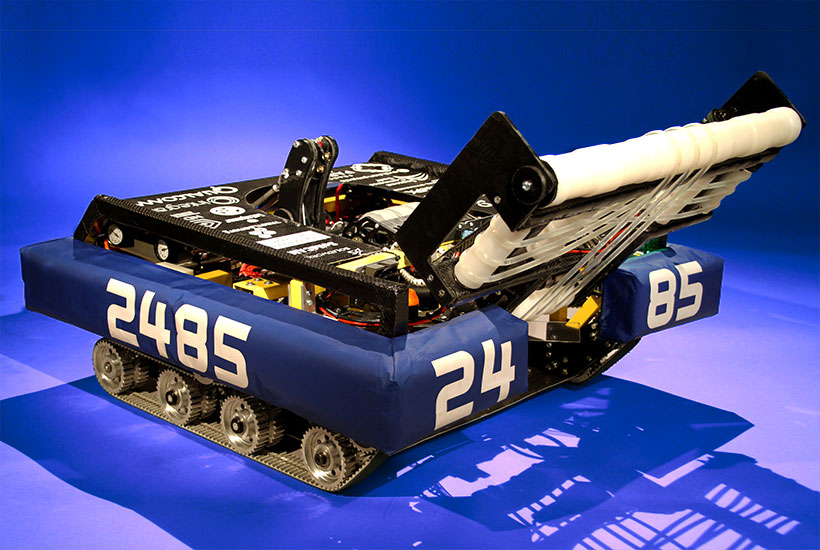
At Francis Parker School, the coolest team you can join isn’t out on the field—instead, look in the science lab.
The W.A.R. Lords robotics team (short for “We Are Robot Lords”) has 95 students on the roster. “There’s football players, cheerleaders, drama kids, lacrosse players,” says Ryan Griggs, Francis Parker’s robotics director. “There’s no tryouts or cuts, and it’s accessible to everyone.” Students can get involved in building robots, finding sponsorships, or making promotional videos. “It runs like a small business, and the students raise a third of the budget themselves,” Griggs says.
The team has been competing for the past decade. In 2015, they won the industrial design award from General Motors for their robot, Orion (pictured above), at the FIRST Robotics Competition in St. Louis, beating 200 other teams from schools around the world. The W.A.R. Lords are awaiting the announcement for this year’s competition theme, and will have six weeks to build their robot.
15Hear It from the Source
UC San Diego’s new monthly “Inside Innovation” event gives the public a chance to learn what’s being studied in the university’s labs, directly from the researchers. Held every third Tuesday from 4 to 6 p.m. at Roth Auditorium, each presentation ends with a networking reception and so far has featured topics ranging from killing cancer cells to software that can monitor a person’s stroke risk.
16Where San Diego Stands: Export Report
Out of 100 U.S. Cities
No. 15
Largest metro by GDP in 2015
No. 16
For total dollar amount of exports in 2015
No. 47
For export intensity, up from No. 51 in 2014
Source: The Brookings Institution 2015 report/San Diego Regional EDC
17News Bite: Innovation VIPs
Ten San Diego companies can now officially say their inventions are truly innovative. Connect has announced the winners of its 2016 Most Innovative New Product Awards, and they range from satellite technology for the military to apps anyone can use. Here’s a sampling of who made the cut this year:
Water Pigeon, a blue tech company, won for its device that can remotely monitor water meters, saving a utility provider from having to replace the entire unit (which saves lots of money, too).
Guru, a software firm that creates augmented reality tours, received acclaim for the engaging app it built for the San Diego Museum of Art.
Defense contractor Cubic Corporation’s portable GATR satellite antennas and Acadia Pharmaceuticals’ new drug to treat Parkinson’s disease also received Connect’s seal of approval.
Winners get prestige and promotion through Connect, plus a fun trophy. In the future, the organization hopes to give out cash as a reward as well.
18The Co-Work Machine
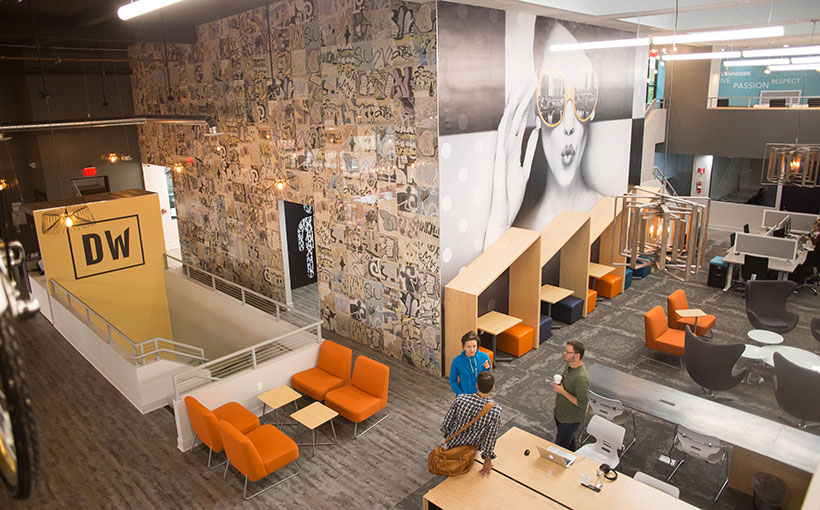
It’s a great time to get the home office out of the house or corner coffee shop. Three new co-working centers with tons of amenities, benefits, and chances to meet like-minded people opened recently. While smaller shops in outer neighborhoods have struggled to find tenants, it seems like the trend holds strong downtown.
WeWork
The largest co-working center in San Diego just opened in the Union-Tribune building (taking up six floors!). Members have access to a private rooftop terrace, six pantries, and 30 conference rooms, and can book space in any of the company’s 100 locations around the world.
Downtown Works
Shared office space meets a tech accelerator under one roof at the two-story center. Financed by Plug and Play—the Silicon Valley incubator that backed Dropbox and PayPal—startups get direct access to Bay Area funding. There are also podcast studios and equipment on-site.
DeskHub
The company drastically expanded its footprint in Little Italy to house the 60 startups, nonprofits, and civic organizations that call it home. Connect now has a permanent address here, and provides members with mentoring, workshops, and access to its Springboard program.
19Phone Forensics?
Even scientists aren’t above snooping on someone’s phone. A new study by Pieter Dorrestein, a biochemist at UC San Diego, showed that scientists can gain some insight about a person’s lifestyle by analyzing the skin cells, hair, and chemical residue that’s left behind on a phone’s screen and cover. For instance, they could tell what shampoo you use and what medications you’re taking. The study appeared in Proceedings of the National Academy of Sciences.
20Chase Disasters (Safely) at the Fleet
Did you love the TV show Storm Chasers? Then a new Imax film at the Fleet is a must-see. Extreme Weather will get you up close with nature’s fury—melting glaciers, wildfires, and tornadoes—all from the comfort of reclining seats in the Heikoff Giant Dome Theater.
Extreme Weather was directed by Sean Casey, star of Storm Chasers (and a La Jolla High School grad!), and follows scientists studying climate change. Casey takes viewers to Alaska, the Midwest, and right here in California to see how small weather changes in one place can cause a natural disaster elsewhere. The immersive documentary was produced by National Geographic, and the cinematography will make you feel the power of a collapsing glacier and the danger of 150-foot flames.
21Expansions: Hopping Abroad

Another San Diego brewery will be exporting its suds around the globe, thanks to a new program that encourages local companies to think bigger and look across the sea when planning an expansion.
Rough Draft Brewing, founded by home brewer Jeff Silver four years ago in Mira Mesa, won a $35,000 grant from the new program MetroConnect to distribute its IPAs to Canada, Spain, and China, and eventually throughout Latin America.
Funded by World Trade Center San Diego and JPMorgan Chase, the two-year-old MetroConnect program invites companies to apply for prize money to expand operations abroad: 15 finalists are given $10K each, and then a panel of judges selects who gets the grand prize of $35K. It’s all part of the county’s “Go Global” initiative to increase San Diego’s ranking as an export city. Cheers to that!
22The Interview: Is San Diego in an Urban Crisis?
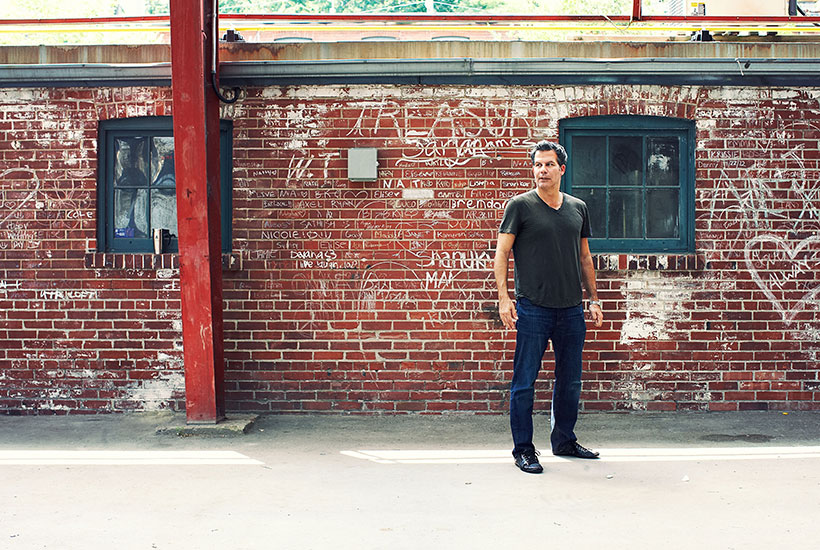
Richard Florida is passionate about revitalizing cities. He’s one of the world’s leading urbanists, a researcher and professor at the University of Toronto, and editor-at-large of The Atlantic’s CityLab. He visited San Diego recently and shared his thoughts on five things the city should do now (plus: what it’s getting right).
San Diego is experiencing a new level of economic segregation and inequality. Florida says that while 33 percent of San Diego County is living comfortably, 67 percent of us are falling behind, living paycheck to paycheck, and are unable to work and live in urban areas. He says that to shorten this gap, government leaders, community groups, businesses owners, and everyone in between need to come together.
Invest in infrastructure projects
“It’s not going to come from the federal government. Our states and cities are going to have to do that. We have to have not only car accessibility, but more biking ability, more walkability, more transit. We need to go out and help people understand what projects matter, and really work with the community to help them understand how things work and how the investments will pay off. Voters need to see infrastructure investment that meets their needs. In San Diego, there are a lot of people who live outside of downtown. There are a lot of people who commute in their cars and like their cars, so it makes sense that not everyone is going to vote for public transit. But over time, I think you can help people understand how important transit might be to the region as a whole.”
Increase affordable housing
“We need to redouble our efforts to build more affordable housing. This means not only homeownership, but affordable rentals, especially for the workers that we need to run our businesses in the downtown and surrounding areas.”
Raise service sector wages and worker value
“In the San Diego metro area, 50 percent of workers are engaged in low-wage, temporary, or precarious service work. We have to raise wages. It’s not just the morally right thing to do; we also have to make service jobs more innovative, more productive, and keep workers more engaged. The research shows that if you pay workers better and engage them in their work, they will generate that innovation and productivity that allows for profits.”
Redistribute power
“We could begin to think about devolving more authority to the local level. There are different needs for different kinds of communities; it’s not one-size-fits-all. For instance, the downtown corridor needs more affordable housing, better service jobs, and more transit, but the outlying suburbs need better roads.
Focus on Baja California connections
“I think San Diego and Tijuana have done a pretty good job and the federal government has been in their way. The whole idea of the border as a security risk rather than a trade opportunity is just something we have to get over. Mexico is a leader in manufacturing; we need to remember that. The local economy is dependent upon binational, bi-regional trade.”
Tags: Design, Illumina, Innovation, Offices, People, Startups, Tech, Tip Sheet


